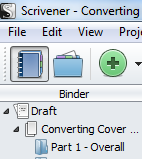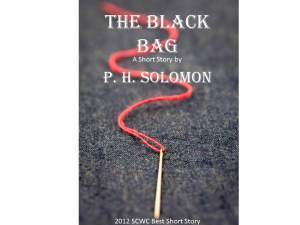You Blog With What?
 Scrivener is a widely used software among writers and people who write frequently. Since it is used for a wide variety of reasons the software is extremely versatile. It can be used for developing fiction and non-fiction books. Also it can be used for short stories, articles and other forms of shorter writing projects. You can download a trial copy here.
Scrivener is a widely used software among writers and people who write frequently. Since it is used for a wide variety of reasons the software is extremely versatile. It can be used for developing fiction and non-fiction books. Also it can be used for short stories, articles and other forms of shorter writing projects. You can download a trial copy here.
Additionally, the software can be used to manage writing projects so it’s up to the user to adjust their development habits to suit what they are writing. Scrivener easily allows writers to break their books into chapters and scenes using the Binder. But not only can these be divided easily they can also be moved around in the scheme so that it serves as a functional outline tool which allows an author to re-organize edit by simply moving containers around. This makes for great structural editing on a book.
Among the uses some people put Scrivener to is blogging. After all, a blog is really just an article written for a website. With the research folder in the Scrivener’s Binder writers can develop their ideas with references, artwork and a host of other files that can be added for use later or just reference. I, and many other, use this to “cast” characters with photos of real people to help visualize their fiction.
 But as a blogging tool, Scrivener is much more powerful than just developing a blog. If you are planning a blog series, Scrivener is very handy for the reasons noted above. Folders can be created in the Binder that represent individual blog posts. It’s a great way to write a post which is what I’m doing now. I’m also using Scrivener in just the way I’m describing to develop two new blog series which I will start this week. I anticipate the work-flow to be very organized and organic so that my posts will flow into one another and read consistently throughout each series.
But as a blogging tool, Scrivener is much more powerful than just developing a blog. If you are planning a blog series, Scrivener is very handy for the reasons noted above. Folders can be created in the Binder that represent individual blog posts. It’s a great way to write a post which is what I’m doing now. I’m also using Scrivener in just the way I’m describing to develop two new blog series which I will start this week. I anticipate the work-flow to be very organized and organic so that my posts will flow into one another and read consistently throughout each series.
However, there’s more to this organization than just a simple way to develop a whole series of posts. I can also look ahead with this basic organization to develop the content further than the blog. If I see that the posts are useful and there is more information to cover I can easily add more posts than I’ve already planned – or reduce as needed. Additionally, I have a ready-made outline to further develop these into short e-books for publication. Since Scrivener also compiles content into e-book formats I can save the blog posts as Word, pdf or full e-book formats. Of course there is other pieces to fit with the content such as cover and proper formatting but with Scrivener I have my content ready to develop into something else beside blogs.

Available at Amazon, Smashwords and All Major E-Book Vendors!
If you haven’t tried Scrivener, why haven’t you? If you already use this powerful software what other tips to you have for its usage? I’d love to hear from you so won’t you leave a question, idea or strategy in the comment section? I’d also love to connect with you over social media so check my contact page for that information. See the News page for announcements and remember to sign-up to receive news and posts by email. I’ve added a new sign-up tab on my FaceBook page to simplify the process. New followers can download The Black Bag via free coupon today!
Thanks for reading!
PHS
Follow Blog via Email
Enter your email address to follow this blog and receive notifications of new posts by email.
Cover art image licensed from iStockPhoto.com
Clip art licensed via Microsoft Office
Filed under: Blogging, Creativity, Editing, Fiction, Indie Publishing, Marketing, Planning, Self-publishing, Social Media, Tech Tips, The Black Bag, Tips, Twitter, Writing Tagged: blogging, creativity, Facebook, Indie Publishing, Marketing, P. H. Solomon, Planning, Scrivener, Short Stories, Social Media, The Black Bag, Tips, Twitter, writing











